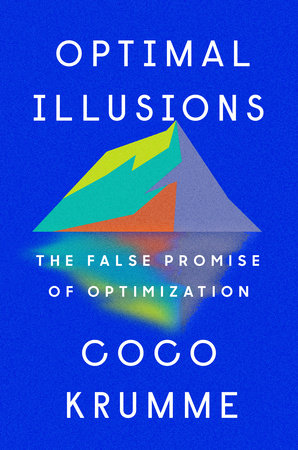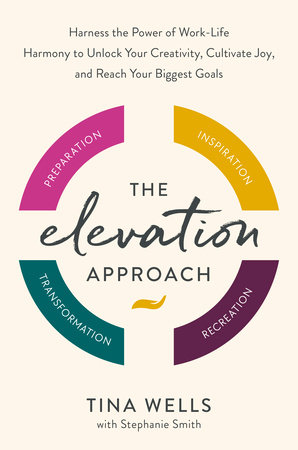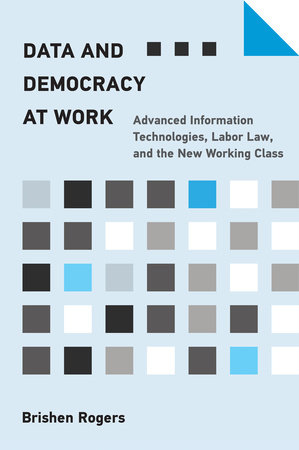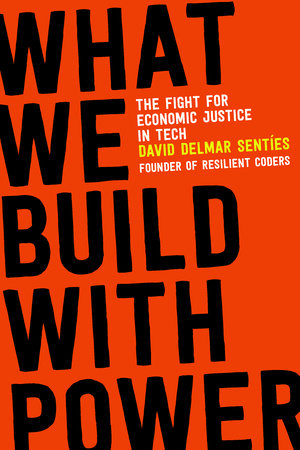Quick Summary
One Sentence Summary
“Start with Why” by Simon Sinek illuminates the importance of understanding and articulating the ‘why’ behind any action or organization, emphasizing its role in inspiring and leading effectively.
Big Idea
The central thesis revolves around the concept of the “Golden Circle” and the idea that successful leaders and organizations are those who start with a clear understanding of their purpose or ‘why’, which in turn guides their ‘how’ and ‘what’.
Five Key Ideas
- The Golden Circle: Understanding the layers of ‘why’ (purpose), ‘how’ (process), and ‘what’ (product), with ‘why’ at the center.
- The Biology of Decision-Making: How human decision-making is influenced more by emotional ‘why’ factors than rational ‘what’ factors.
- The Law of Diffusion of Innovation: The adoption curve of a product or idea, and the role of ‘why’ in appealing to early adopters and innovators.
- Leadership and Inspiration: The difference between manipulation and inspiration, and how starting with ‘why’ can inspire loyal followership.
- Sustainability and Adaptability: The importance of staying true to the ‘why’ for long-term success and the ability to adapt in a changing environment.
Actionable Advice
- Identify and articulate your personal or organizational ‘why’.
- Communicate your ‘why’ consistently in messaging and decision-making.
- Prioritize hiring and collaboration with those who believe in your ‘why’.
About the Author
Simon Sinek is a motivational speaker, marketing consultant, and author, known for popularizing the concept of ‘why’ in leadership and organizational development.
Read Next
- “Leaders Eat Last” by Simon Sinek for deeper insights into leadership principles.
- “Drive” by Daniel H. Pink for understanding motivation and how it ties to purpose.
- “The Infinite Game” also by Simon Sinek for strategies on long-term success in business and life.
In Depth
The Golden Circle
Simon Sinek’s concept of the Golden Circle is fundamental. Imagine three concentric circles. The innermost is ‘why’, the middle ‘how’, and the outermost ‘what’. Most organizations work outside in, starting with ‘what’. Sinek flips this.
‘Why’ is the core. It’s your purpose, your reason. It’s not about making money; that’s a result. It’s deeper. It’s the belief driving your existence.
I experienced this firsthand. In a previous role, our team struggled. We knew what we did and how, but not why. Once we identified our ‘why’, our work gained meaning. Productivity soared.
A detailed example in the book is Apple Inc. They start with ‘why’. Their ‘why’ isn’t computers or phones. It’s thinking differently, challenging the status quo. That’s why they innovate. That’s why people camp out for new releases. Their ‘how’ and ‘what’ follow naturally.
Sinek explains:
“People don’t buy what you do; they buy why you do it. And what you do simply proves what you believe.”
When you start with ‘why’, your ‘how’ and ‘what’ align. Your ‘how’ becomes your values or principles. Your ‘what’ becomes the tangible proof of your ‘why’. They become extensions, not just tasks or products.
When an organization starts with ‘why’, it attracts people who share its beliefs. This fosters loyalty. Think about brands you’re loyal to. It’s not just because of their products, right? There’s a deeper connection. It’s emotional. That’s the power of ‘why’.
Starting with ‘why’ also guides decision-making. Faced with a tough choice? Return to your ‘why’. It’s a compass. In my experience, when decisions align with the ‘why’, they feel right. They resonate with the team and the audience.
However, understanding your ‘why’ isn’t always easy. It’s often buried under years of doing what and how. Uncovering it requires introspection and honesty. It can be a journey. But it’s worth it.
Once you know your ‘why’, communication shifts. It becomes more compelling. It’s not just features and benefits. It’s storytelling. It’s inspiring. This is key in leadership. When leaders articulate the ‘why’, they don’t just have employees; they have followers.
The Golden Circle isn’t just theory. It’s a practical tool. It applies to organizations, leaders, and even personal lives. Knowing your ‘why’ gives clarity. It fuels passion. It attracts the right opportunities and people.
In summary, the Golden Circle is about starting at the core. It’s understanding your purpose, then aligning your actions and communications around it. It’s about inspiring rather than manipulating. When you’re clear about your ‘why’, the ‘how’ and ‘what’ fall into place. It’s transformative.
The Biology of Decision-Making
Humans decide with emotions, then justify with logic. Sinek emphasizes this in the second key idea: the biology of decision-making. Our brain has three major parts. The neocortex handles rational thoughts. The limbic brain deals with feelings and trust. It’s where decisions are made.
In the book, Sinek uses the example of a car purchase. Rational reasons might include fuel efficiency, safety ratings, and price. But often, the final choice is emotional. It’s about how the car makes you feel. It’s the same with brands. People don’t just buy a product; they buy the feeling associated with it.
Sinek states:
“If you don’t know why you do what you do, how will you ever get people to vote for you, buy something from you, or, more importantly, be loyal and want to help you succeed?”
This quote captures the essence. Understanding your ‘why’ taps into emotions. It’s what influences decisions.
In my experience, decisions based on a strong emotional ‘why’ are more satisfying. They feel right. This isn’t just personal. It’s seen in successful marketing campaigns. They don’t just list features. They tell a story. They connect emotionally.
When a company understands this, its messaging changes. It’s not about the best features. It’s about how the product or service improves lives. It’s the feeling of safety, innovation, or community. This emotional connection is what drives loyalty and action.
Take Apple again. Their ads don’t just list specs. They show how their products fit into your life. They tap into the desire for innovation and community. It’s emotional. It’s effective.
The biology of decision-making isn’t just for marketers. Leaders can use it too. When they connect emotionally with their team, they inspire action. They build trust. This isn’t manipulation. It’s understanding human nature. It’s leading with empathy.
Emotional connections also foster loyalty. Think of brands or leaders you’re loyal to. It’s not just about what they offer. It’s how they make you feel. That’s the limbic brain in action.
However, this isn’t a call to ignore logic. The neocortex is important. It’s about balance. Inspire with emotion, then justify with logic. That’s the formula for effective communication and decision-making.
In essence, the biology of decision-making teaches us that emotions drive actions. Successful leaders and brands understand this. They start with the emotional ‘why’. They inspire and build trust. They know that to influence decisions, you must first connect emotionally. Then, and only then, do the rational reasons follow.
The Law of Diffusion of Innovation
Sinek introduces the Law of Diffusion of Innovation to explain how ideas spread. It’s a bell curve. Innovators are at the start, then early adopters, early majority, late majority, and laggards.
Here’s the game-changer: to cross from early adopters to the early majority, you need more than a great product. You need to inspire. That’s where the ‘why’ comes in. It’s what gets the early adopters on board. They don’t just buy what you do; they buy why you do it.
Sinek gives the example of TiVo. Technologically, it was revolutionary. But it struggled initially. Why? Because they marketed the ‘what’ – a digital video recorder. They didn’t focus on the ‘why’ – the freedom to watch what you want, when you want.
He states:
“The goal is to do business with people who believe what you believe. If you talk about what you believe, you will attract those who believe what you believe.”
This quote captures the essence. Your ‘why’ attracts early adopters. They’re the ones who spread the word. They’re loyal and passionate.
I saw this in a startup I worked with. Their product was innovative. But it was their mission, their ‘why’, that attracted early users. These users became advocates. They helped the product cross that crucial chasm to the early majority.
But here’s a challenge: articulating your ‘why’ isn’t always easy. It’s not a slogan. It’s a belief. For TiVo, shifting the message to freedom and control would have appealed to the ‘why’. It would have attracted early adopters seeking those values.
The Law of Diffusion of Innovation teaches valuable lessons. First, innovation isn’t just about products. It’s about ideas and beliefs. Second, to scale, you need more than a good product. You need a compelling ‘why’. It’s what gets the ball rolling.
But there’s a caution. Don’t lose your ‘why’ as you grow. It’s tempting to shift focus to the broader market. But losing your ‘why’ can alienate your base. Stay true to it. It’s what got you started. It’s what will keep you going.
In summary, the Law of Diffusion of Innovation isn’t just about numbers. It’s about beliefs and emotions. It’s about starting with the few who believe what you believe. It’s about inspiring them. Do that, and they won’t just buy your product. They’ll champion your cause. They’ll help you spread your idea, your ‘why’, to the masses.
Leadership and Inspiration
Sinek distinguishes between manipulation and inspiration. Manipulation relies on push tactics. Inspiration pulls. It’s based on a shared ‘why’.
A striking example is the Wright brothers. They had no funding or media attention. But they had a clear ‘why’. They believed in the power of flight. That belief inspired their team. Despite hardships, they succeeded.
Sinek states:
“Great leaders inspire people to act. They offer them a sense of belonging, some higher purpose than themselves.”
This quote encapsulates the essence. Inspiration comes from a shared sense of purpose.
As a team leader, I’ve seen the difference. When I just gave instructions, the results were average. When I shared my ‘why’, the passion, the vision, the team excelled. They were invested. They felt part of something bigger.
Leadership is about more than giving orders. It’s about inspiring action. It’s about sharing a belief, a vision. That’s what attracts loyal followers.
But there’s a challenge. It’s easier to resort to manipulation. Discounts, promotions, fear tactics. These might give short-term results. Inspiration is tougher. It requires vulnerability. It requires consistently communicating your ‘why’.
Yet, the rewards are immense. Inspired teams are more creative, more dedicated. They don’t just work for a paycheck. They work for a cause.
Sinek’s emphasis on leadership and inspiration is a call to action. It’s a call to lead with purpose. To inspire, not manipulate. It’s a call to build something that people want to be part of.
In essence, true leadership is not about being in charge. It’s about taking care of those in your charge. It’s about inspiring them with your ‘why’. Do that, and you won’t just have employees or customers. You’ll have followers, believers, advocates.
Trust and Loyalty
Sinek highlights trust and loyalty as crucial outcomes of starting with ‘why’. People don’t just buy what you do; they buy why you do it. When your ‘why’ resonates, it builds trust. That trust turns into loyalty.
A compelling example is Harley-Davidson. They sell motorcycles. But their ‘why’ is about freedom and self-expression. It’s why their customers don’t just buy bikes. They buy tattoos of the brand. It’s a deep, emotional connection. It’s loyalty.
Sinek emphasizes this, saying:
“Trust is built on being consistent with your values and beliefs. Over time, we come to rely on them and be loyal to them.”
This quote reflects the essence. Consistency in your ‘why’ builds trust. Trust leads to loyalty.
I experienced this with a favorite coffee shop. Their ‘why’ wasn’t just coffee. It was community. Every visit, I felt it. The atmosphere, the conversations. I didn’t just go for the coffee. I went for the experience. I was loyal, even when other options were available.
Building trust and loyalty isn’t quick. It’s not about flashy campaigns. It’s about consistency in your beliefs and actions. It’s about showing your ‘why’ in everything you do.
But here’s a challenge: the marketplace is volatile. Staying true to your ‘why’ can be hard. It’s tempting to chase trends or profits. Yet, straying from your ‘why’ can erode trust. It can break the emotional connection.
To build loyalty, you need patience. You need to invest in relationships. This applies to customers, employees, even personal relationships. When people trust your ‘why’, they stick around. They become advocates. They weather storms with you.
Sinek’s emphasis on trust and loyalty is a reminder. It’s a reminder that transactions aren’t just business. They’re personal. They’re emotional. They’re about shared values and beliefs.
In summary, trust and loyalty are the fruits of a clear, consistent ‘why’. They are about emotional connections, not just transactions. They’re what turn customers into followers, employees into champions. In a world of endless options, trust and loyalty aren’t just nice to have. They’re essential. And they start with ‘why’.
Actionable Advice
- Define Your ‘Why’: Dig deep to understand your core belief. It’s not about what you do, but why you do it. Write it down.
- Communicate Your ‘Why’: Once defined, consistently communicate your ‘why’ in your messaging. Let it guide your actions and decisions.
- Hire Believers: Recruit people who resonate with your ‘why’. They will be more motivated and dedicated.
- Inspire, Don’t Manipulate: Focus on inspiring action through shared beliefs, not manipulating through incentives or fear.
- Be Consistent: Ensure your actions consistently reflect your ‘why’. This builds trust and credibility.
- Foster Emotional Connections: Create an emotional bond with your audience. Understand their needs and how your ‘why’ aligns with them.
- Lead with Empathy: As a leader, connect emotionally with your team. Share your vision and listen to their input.
- Stay Patient: Building trust and loyalty takes time. Don’t rush it or sacrifice your ‘why’ for short-term gains.
- Evaluate and Adjust: Regularly assess if your actions align with your ‘why’. Adjust if necessary.
- Celebrate Successes: Recognize and celebrate when your ‘why’ leads to achievements. It reinforces the belief and motivation in your team.
About the Author
Simon Sinek is a motivational speaker and author, known for his expertise in leadership and management. Born in 1973, Sinek has a diverse background, having lived in multiple countries. He studied law at London’s City University but shifted to advertising. Sinek gained fame with his TED Talk “How Great Leaders Inspire Action,” one of the most-watched on the platform. He founded Sinek Partners, a consultancy providing guidance on leadership and communication. Sinek’s books, including “Start with Why” and “Leaders Eat Last,” are global bestsellers. His work focuses on inspiring leadership and building strong workplace cultures. Sinek believes in the power of ‘why’, emphasizing that understanding the purpose is key to success. He advocates for empathetic leadership, asserting that leaders should prioritize the well-being of their teams. Sinek’s philosophy revolves around the idea that inspired individuals can achieve remarkable things. He continues to influence through his writing, speaking engagements, and thought leadership.
Read These Next
You might like these similar books
- “Leaders Eat Last” by Simon Sinek
- “Drive: The Surprising Truth About What Motivates Us” by Daniel H. Pink
- “The Power of Habit: Why We Do What We Do in Life and Business” by Charles Duhigg
- “Dare to Lead: Brave Work. Tough Conversations. Whole Hearts.” by Brené Brown
- “Good to Great: Why Some Companies Make the Leap…And Others Don’t” by Jim Collins
FAQ
1. What is the main message of “Start with Why”?
The book emphasizes the importance of knowing your purpose (‘why’) to inspire and lead effectively.
2. Who should read “Start with Why”?
Business leaders, entrepreneurs, marketers, and anyone interested in personal development or leadership.
3. Can “Start with Why” help small businesses?
Yes, the principles can guide small businesses to build a loyal customer base and strong team culture.
4. Is the book relevant for non-profit organizations?
Absolutely. Non-profits can deeply benefit from understanding and communicating their ‘why’.
5. How long does it take to read “Start with Why”?
It varies, but on average, it can be read in a few hours to a couple of days.
6. Does the book provide practical advice?
Yes, it offers actionable insights on how to incorporate the ‘why’ into leadership and business strategies.
7. Are there examples or case studies in the book?
Yes, Simon Sinek uses real-world examples and case studies to illustrate his points.







